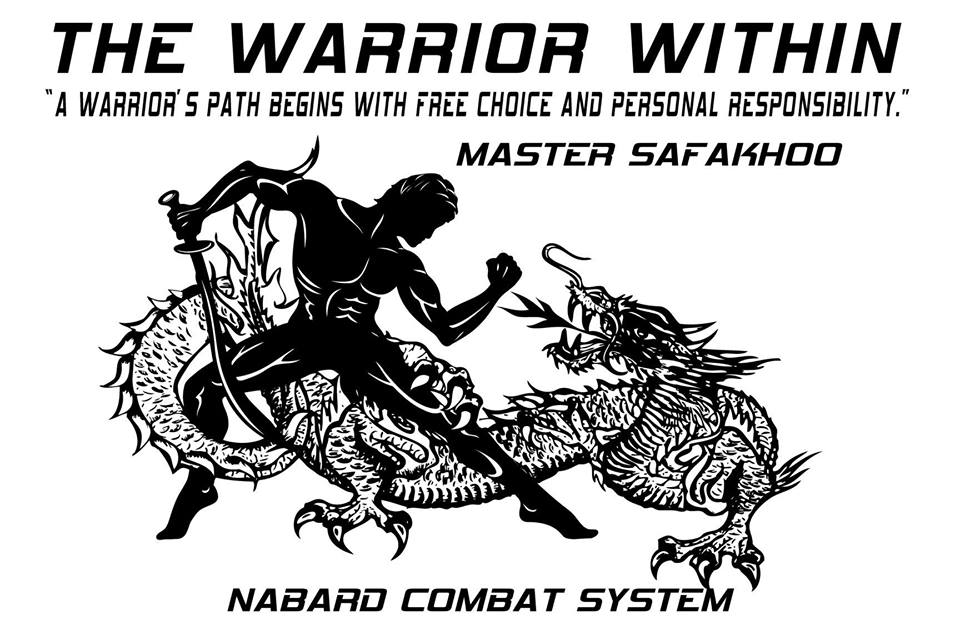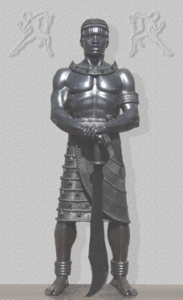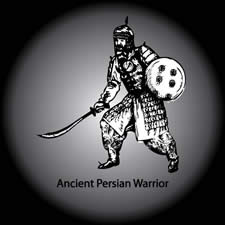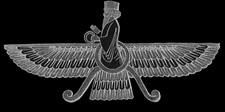
“One who seeks excellence in martial arts must not only have what it takes, but also the devotion of a Master willing to decipher the scientific template of the art rather than merely its movements.” – Master Safakhoo



historical roots of nabard
It would be a disservice to the evolution of martial practices for the Middle Eastern predecessors to not be acknowledged for their valuable contributions. The Middle East is rich in martial practices and concepts, some of which are being developed and refined in the 21st century. For example, the Israeli, Imre Lichtenfeld, began to develop the National System of Defensive Tactics known as “Krav Ma Ga” in the 1930’s and 1940’s. Likewise, the Persians have claim a notable fighting practice known as “Nabard,” an exotic art of combat. The word ‘nabard’ has a history all its own. ‘Nabard’ (loosely translated as ‘combat’) was the term originally used to refer to traditional Persian martial practice. Elements of traditional martial practice are still exhibited in an expressive fighting dance performed in suburbs throughout Persia. By applying the principals of this tradition to a strategy of survival, Safakhoo designed a martial art system which, in deference to its cultural heritage, he has named “Nabard.”
A notable and influence on Nabard is the Persian sport Varzesh-e Pahlavani (meaning the “Sport of the Heroes”), also known as Varzesh-e Bastani (meaning the “Sport of the Ancients”), is a Persian traditional discipline of gymnastics and wrestling, which was originally an academy of physical training for military purposes. Varzesh-e Pahlavani combines elements of the Persian culture with the spirituality of Sufism. Participants are expected to be pure, truthful, good tempered, and strong in body. The principles of humility are exemplified by a verse recited at many meetings: “Learn modesty, if you desire knowledge.”
The main part of a Varzesh-e Pahlavani session is dedicated to gymnastics or calisthenics, using a pair of wooden clubs (mil), metal shields (sang), and bow-shaped iron weights (‘kaman). The exercises also involve acrobatics like Sufi whirling and juggling. The session ends with submission wrestling known as the “Koshti Pahlavani”.
Though similar to Varzesh-e Pahlavani in body and strength conditioning techniques as well as Zoroastrianism in principles and philosophy, Nabard is designed as a war strategy. Nabard seeks to maximize the human body’s potential to move around an opponent, to identify defensive weakness and offensive opportunities in all spatial dimensions, rather than linearly. Techniques are taught as being interchangeable, for example blocks are performed so that they can be efficiently transformed into grabs or punches. Nabard emphasizes reaction and transitions between techniques so that after a dodge or a block, one may respond to an attack in any direction. Safakhoo developed these strategies in such a way that they showcase the adaptability of the human body and fighting techniques.
That the martial arts are continuing to develop exhibits their lasting relevance and the possibility of further refining martial strategies. As the Israeli government was able to develop and refine martial practices from varied backgrounds, Nabard, too, is a forerunner in the advancement and refinement of martial arts. With roots in native traditions, Nabard is enriched by its traditional Persian roots, such as the fighting dances performed in Persian villages, and has become modern and effective fighting system.
The quest for effective self-defense reaches into the far recesses of time, as far into history as humans have been on earth. Historians agree the beginnings of the civilized world and of science, art, literature and medicine existed in their infancy in ancient Mesopotamia, whose ethnic groups included Persians, was nestled between the Tigris and Eurphrates rivers. The location contributed to the area’s abundance of resources. The threat of flood provoked the community to adapt and thrive. There is evidence of the first recorded writing, the creation of the wheel, and specimens of advanced weaponry from Mesopotamia.
Mesopotamia was profoundly affected ethnically, linguistically, religiously and culturally by waves of invasion at the hands of Greeks, Aramaeans, and pre-Islamic Arabs. Due to the constant flood of invaders the people of the ancient Middle East were always working to develop ways to protect personal property, family, and land. Weapons, though effective, weren’t often accessible to the common people of this area, who were mostly responsible for their own welfare. The hands and body were the most reliable sources of protection. Thus empty hand martial practice was adapted for use of individual citizens. Though the Middle East is not typically noted for its ancient martial practices, each culture of the region boasts a collection of effective martial arts.
Weapons played a great role in the adaptation of martial arts. An example of ancient weaponry used in modern martial practices is the sickle-sword, which was created by the Sumerians around 2500 B.C. The present day version of the weapon is the famous broadsword. Additionally, this region contributed one of the most devastating weapons of the ancient world. A spin-off of the sickle-sword, the bronze socket axe had a narrowing point offering lethal blows capable of piercing bronze plate armor.
“History illustrates the contributions of various area cultures to the development of martial weapons in this region of the world. The Hittites were fierce and inventive warriors. They were the first to extract iron from ore. From this new metal they made weapons that were much stronger than the bronze and copper ones used by everyone else.” (Jacob M. Fellure p. 21) The Hittite’s changed the arsenal of the ancient world. Sword fighting places the sickle sword in the hands of an individual with martial combat training, a lethal combination of skill and weaponry. “The Hittite civilization was destroyed in 1200 B.C. The contributions the Hittites made is priceless, for the discoveries bled into the Babylonian and Neo-Babylonian empires. At some point, probably around 1200 B.C. Assyria acquired the skill of iron working, probably from a Hittite fleeing his conquered nation.” (Jacob M. Fellure p. 29)